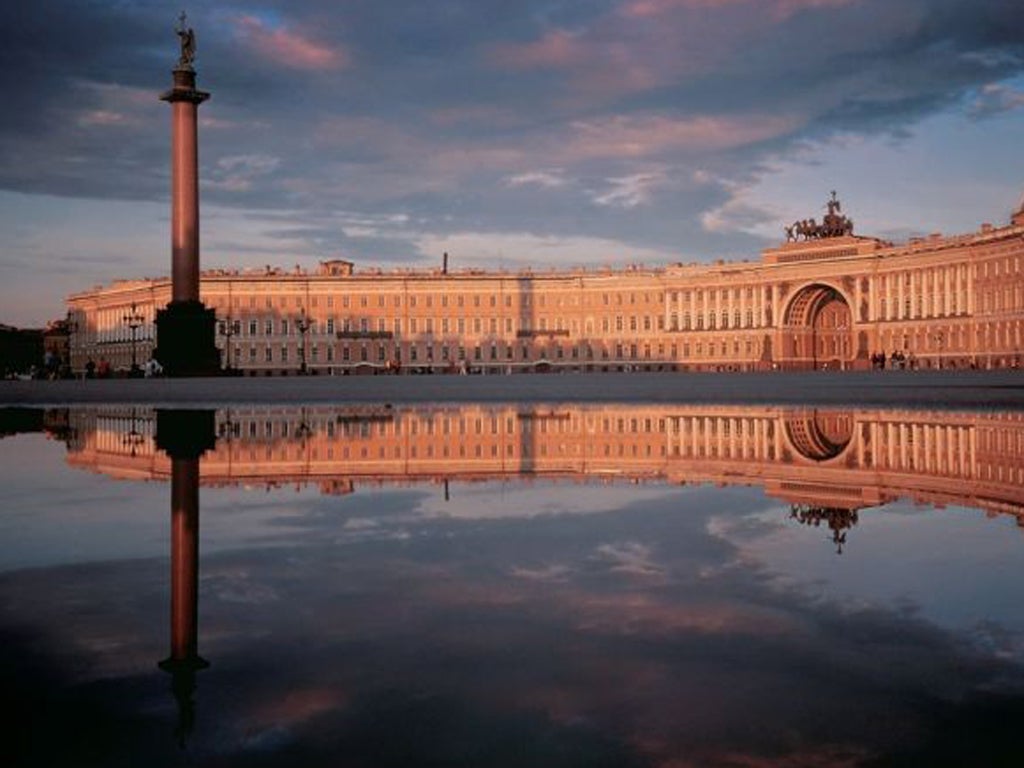The Hermitage: Bold plans to change Russia's fine-art tradition
The state museum is expanding to make it more contemporary. By Michael Glover

Directly opposite the Baroque slice of green, white and gold confectionery known as the State Hermitage Museum of St Petersburg, stands the equally striking yellow, white and gold General Staffs Building. Almost 30 years ago, the vast east wing of this 19th-century building – that wing alone contains 800 rooms – was gifted to the Hermitage. What to do with it? The Hermitage desperately required more display space for its three million objects. More pressing was the need to confront the problem of modernity. A museum that contains nothing but the art of the past risks becoming a dead space. In 2007, a young curator called Dmitri Ozerkov was put in charge of the 20/21 project, to confront the pressing challenge of contemporary art.
The Hermitage has staged a range of loan exhibitions by living artists over the years. Antony Gormley was on display here last year. In 2001, a great spider by Louise Bourgeois shivered through a Russian winter in one of the courtyards. After the exhibition, Bourgeois, grateful for the enthusiastic reception that her work had received, gifted that spider to the Hermitage. Having accepted it, the institution then discovered that any gift attracts a tax bill of 30 per cent of its value. The gift was returned, and the artist felt duly insulted.
This week, with the opening of the first of the refurbished rooms of the General Staffs Building – the project will not be completed until 2014, the 250th anniversary of the foundation of the Hermitage by Catherine the Great – an interesting solution, made easier by a loan of $150 million from the World Bank for reconstruction, has been found. The building contains both architecturally untouchable interiors – the building itself was long in use by the ministries of finance – and spaces which, due to war damage, can be redeveloped.
Over the coming months, the public can enter free of charge, having booked online. The unembellished rooms will be used to display contemporary art. Other rooms, which will preserve refurbished interiors, are due to be occupied by art of the 19th century and onwards. For the first time, works by Rembrandt and Picasso will be shown on opposite sides of Palace Square.
Currently, one temporary space is given over to Jake and Dinos Chapman's The End of Fun. A series of glass cabinets show vertiginous landscapes with skulls on spikes, and Ronald MacDonald in a boat encircled by sharks. And, for the very first time at the Hermitage, a suite of contemporary artist's rooms was inaugurated last week, with a permanent space devoted to Dmitri Prigov, a part-German Muscovite conceptualist who died in 2007. In these rooms the Hermitage is breaking new ground: one installation renders a wall drawing in three dimensions.
Perhaps the greatest challenge facing the institution has been how to tell art's story in the 20th century and on and yet be ever mindful of the fact that it had neither the desire nor the resources to transform itself into a Russian equivalent of MoMa. Being Russian, and therefore proud of its own avant garde heritage, which was either suppressed or ignored during Soviet times, the Hermitage has done so by emphasising the influence of Russia upon art of the recent past.
"It would be foolish for us to pretend that we are players in the art market," says Ozerkov. "In the old days everything was paid for. All the museum had to do was to arrange the hanging. On the other hand, we do not want to be accountable to the state. If that happened, some acquisitions committee would say to us: 'Why did you buy the Koons and not the Hirst?' No, we will look to the coming generations for our new art."
Subscribe to Independent Premium to bookmark this article
Want to bookmark your favourite articles and stories to read or reference later? Start your Independent Premium subscription today.

Join our commenting forum
Join thought-provoking conversations, follow other Independent readers and see their replies